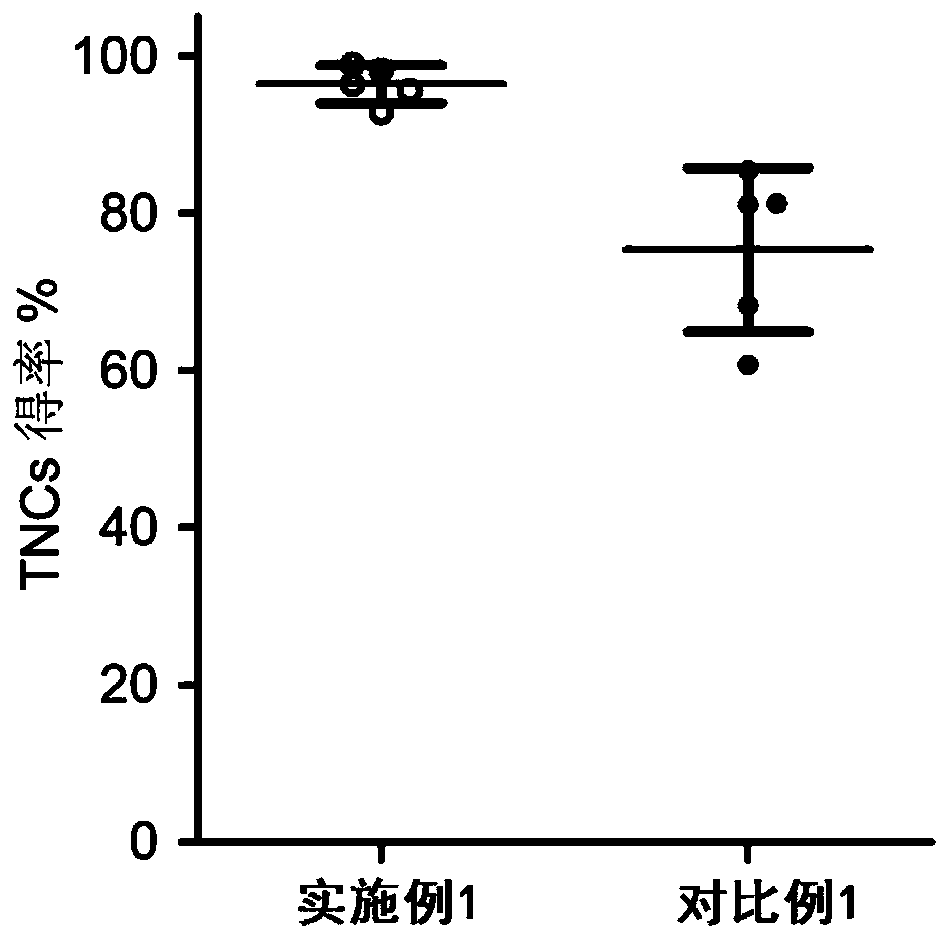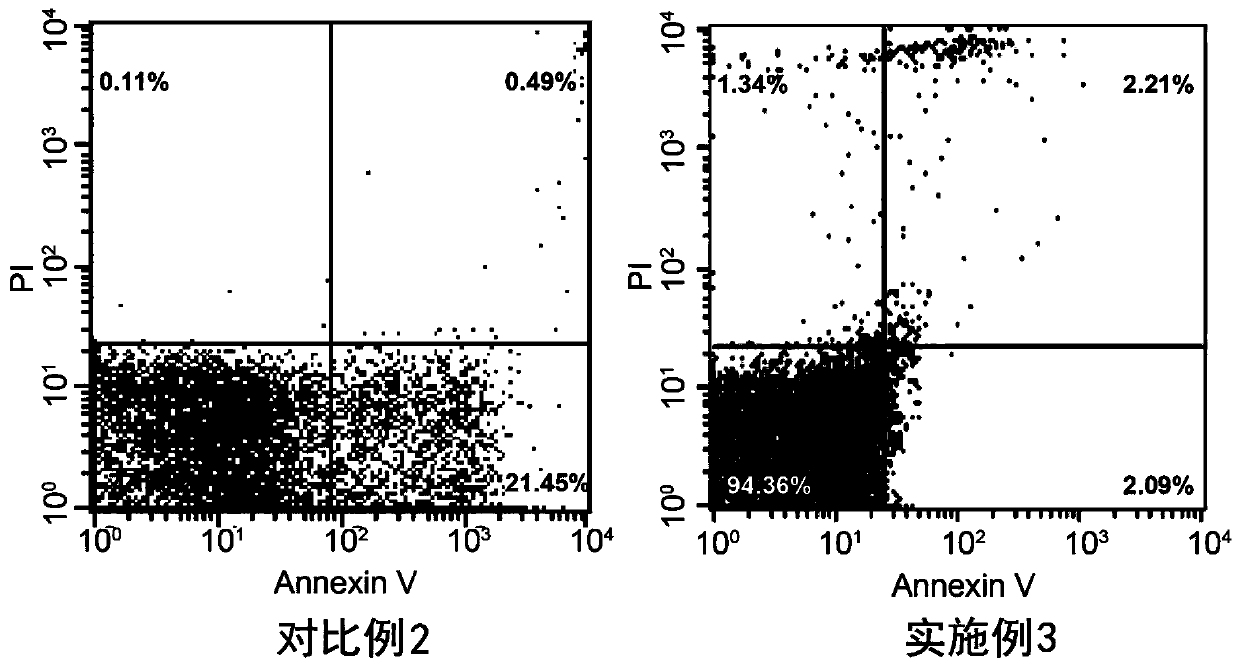Method for separating total nucleated cells from mononuclear cells from umbilical cord blood
A technology of nucleated cells and umbilical cord blood, applied in the medical field, can solve the problems of low viability of nucleated cells, and achieve the effects of low reagent cost, low permeability damage, and high separation purity
- Summary
- Abstract
- Description
- Claims
- Application Information
AI Technical Summary
Problems solved by technology
Method used
Image
Examples
Embodiment 1
[0027] Example 1 Isolation of total nucleated cells in cord blood
[0028] The cryopreserved cord blood was taken from the Cord Blood Hematopoietic Stem Cell Bank of Shandong Province.
[0029] The centrifuge adopts Thermo Fisher Scientific Sorvall ST 16R high-speed refrigerated centrifuge.
[0030] Composition of PBS buffer:
[0031] The formulation of the PBS buffer solution is 137mM sodium chloride, 2.7mM potassium chloride, 2mM potassium dihydrogen phosphate and 10mM disodium hydrogen phosphate, and the pH is about 7.3-7.5.
[0032] (1) Cord blood resuscitation: quickly take out a frozen cord blood from the liquid nitrogen tank, place it in a 37°C water bath, and shake the cryopreservation bag while incubating for rapid recovery;
[0033] (2) Separate TNCs: Transfer 30mL of recovered cord blood into a 250mL centrifuge tube, add 4℃ pre-cooled PBS buffer containing 5% dextran and 2% human serum albumin to 150mL, mix well , Centrifuge at 1500 rpm for 10 min at 4°C, increase speed 9, de...
Embodiment 2
[0037] Example 2 Yield and viability of TNCs
[0038] 1. Recovery rate
[0039] The TNCs precipitate obtained in Example 1 and Comparative Example 1 was resuspended again in 100 mL of PBS buffer containing 5% dextran and 2% human serum albumin, and 20 μL was drawn for cell counting. The total number of cells was calculated with a hemocytometer, and The recovery rate of TNCs is calculated as follows:
[0040] Recovery rate of TNCs (%) = number of TNC precipitated cells / number of cord blood TNC before cryopreservation
[0041] The result is figure 1 Shown: the recovery rate of TNCs in Comparative Example 1 was 75.34%±10.41%; significantly lower than the recovery rate of TNCs in Example 1 of 96.38%±2.40% (t-test).
[0042] 2. Recovery rate
[0043] The cell viability of the TNCs recovered in Example 1 was measured by flow cytometry, and the TNCs cell suspension was diluted to 1×10 with PBS buffer containing 5% dextran and 2% human serum albumin 6 / mL, take 4 flow-style loading tubes, add 2...
Embodiment 3
[0044] Example 3 Isolation of mononuclear cells in cord blood
[0045] After resuspending the TNCs precipitate in Example 1 with 100 mL of PBS buffer containing 5% dextran and 2% human serum albumin, 50 mL of the cell suspension was taken and slowly added to an equal volume of Ficoll lymphocyte separation solution. The density gradient was centrifuged. Centrifuge at 2000rpm / min for 30min, speed up 1, speed down 1. Collect the albuginea layer of mononuclear cells, centrifuge at 1000rpm / min for 5 minutes at 4℃, speed up 9, speed down 7, centrifuge, discard the supernatant, and obtain MNCs precipitation.
PUM
 Login to View More
Login to View More Abstract
Description
Claims
Application Information
 Login to View More
Login to View More - R&D
- Intellectual Property
- Life Sciences
- Materials
- Tech Scout
- Unparalleled Data Quality
- Higher Quality Content
- 60% Fewer Hallucinations
Browse by: Latest US Patents, China's latest patents, Technical Efficacy Thesaurus, Application Domain, Technology Topic, Popular Technical Reports.
© 2025 PatSnap. All rights reserved.Legal|Privacy policy|Modern Slavery Act Transparency Statement|Sitemap|About US| Contact US: help@patsnap.com



